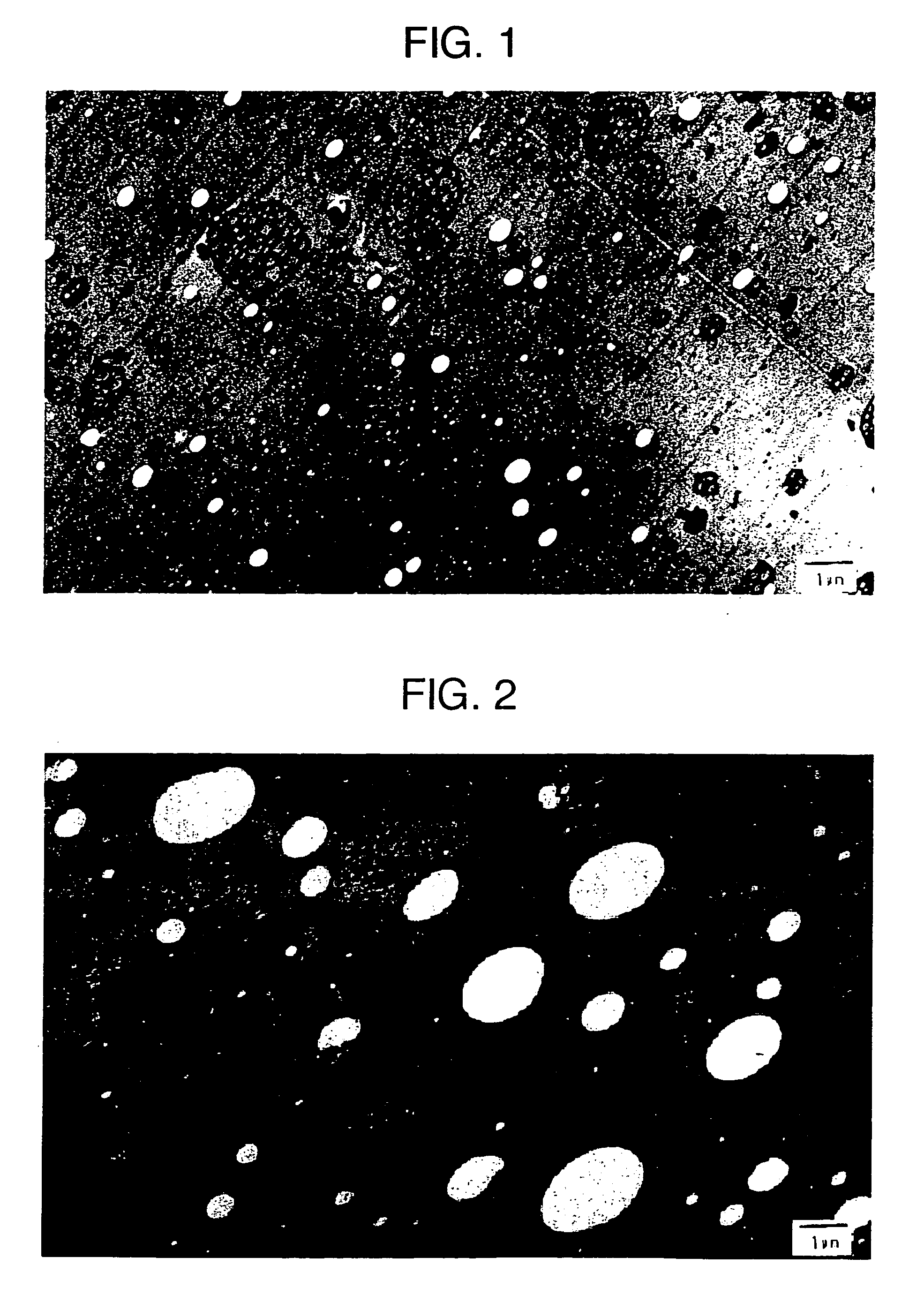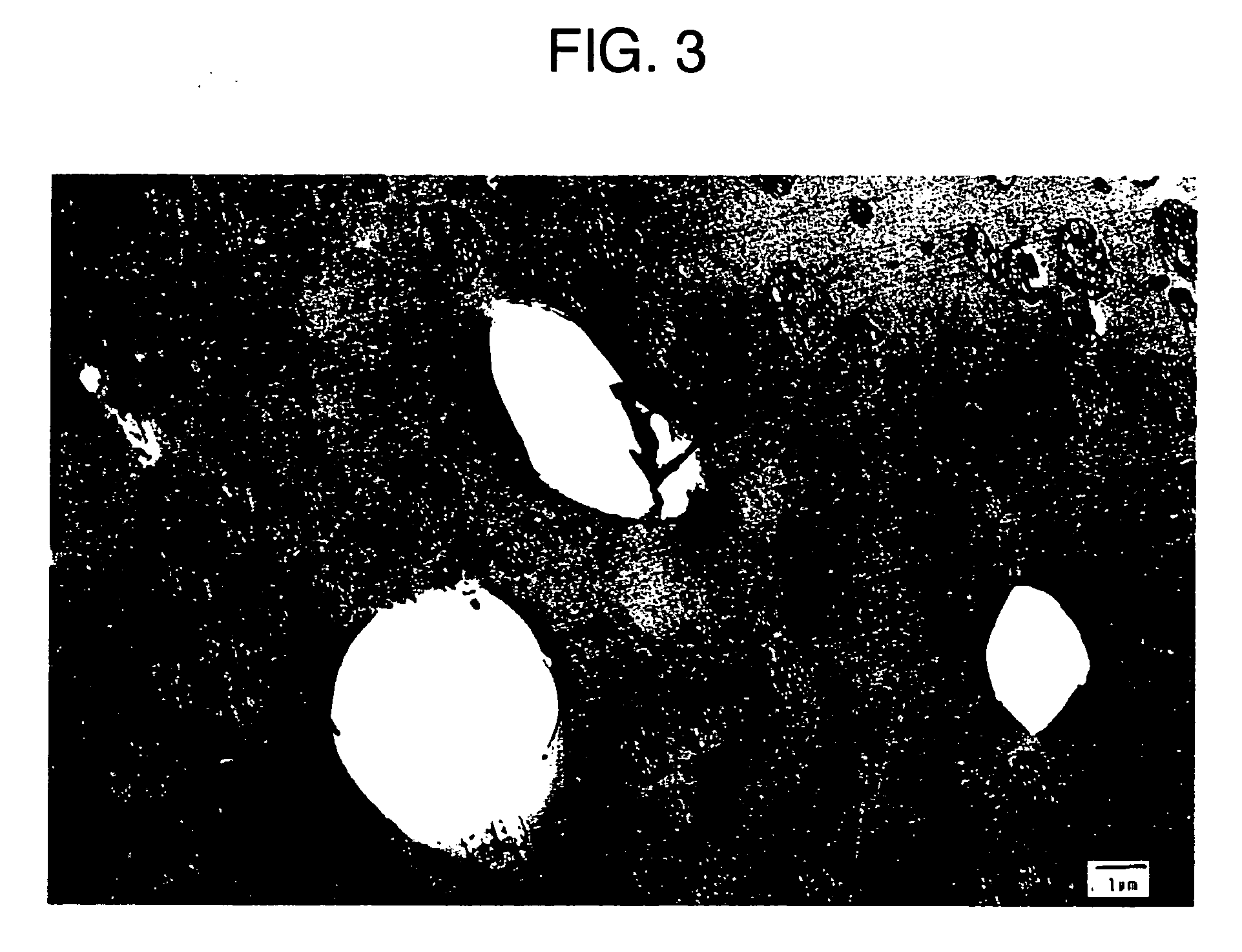Flame-retardant styrenic resin composition
- Summary
- Abstract
- Description
- Claims
- Application Information
AI Technical Summary
Benefits of technology
Problems solved by technology
Method used
Image
Examples
reference example 1
Preparation Method of HIPS 1
[0114] A solution comprising 2 wt % of low cis polybutadiene rubber (residual unsaturated bonds: 36% of 1,4-cis bond, 52% of 1,4-trans bond and 12% of 1,2-vinyl bond, Mooney viscosity: 55, and 5% styrene solution viscosity: 165 cP) dissolved in 85 wt % of styrene monomer was prepared. This solution was incorporated with 12 wt % of ethylbenzene, 0.03 wt % of 1,1-bis(t-butylperoxy)3,3,5-trimethylcyclohexane (Perhexa 3M, NOF Corp.), 0.10 wt % of α-methyl styrene dimer and 0.05 wt % of antioxidant, to prepare the starting solution. The starting solution was continuously supplied to an agitator-equipped tank type first reactor (inner volume: 6 L) at 2 L / hour, where the temperature in the tank was controlled in such a way to have a solid concentration of 30% at the first reactor outlet to complete the phase inversion and prepare the particles. Agitation speed in the first reactor was controlled adequately to keep the particle size of the rubber-like polymer pa...
reference example 2
Preparation Method of HIPS 2
[0115] HIPS 2 was prepared in the same manner as in Reference Example 1, except that the contents of low cis polybutadiene rubber, 1,1-bis(t-butylperoxy)3,3,5-trimethylcyclohexane and α-methyl styrene dimer, and the agitation speed in the first reactor were adequately changed. The physical properties of the HIPS 2 thus obtained are given in Table 1.
reference example 3
Preparation Method of HIPS 3
[0116] HIPS 3 was prepared in the same manner as in Reference Example 1, except that the rubber to be used was replaced by high cis polybutadiene rubber (residual unsaturated bonds: 96% of 1,4-cis bond, 2% of 1,4-trans bond and 2% of 1,2-vinyl bond, Mooney viscosity: 43, and 5% styrene solution viscosity: 135 cP), the contents of 1,1-bis(t-butylperoxy)3,3,5-trimethylcyclohexane and α-methyl styrene dimer were adequately changed, the agitation speed in the first reactor was also adequately changed, and the extruder temperature was increased compared with that in Reference Example 1. The physical properties of the HIPS 3 thus obtained are given in Table 1.
PUM
| Property | Measurement | Unit |
|---|---|---|
| Temperature | aaaaa | aaaaa |
| Temperature | aaaaa | aaaaa |
| Length | aaaaa | aaaaa |
Abstract
Description
Claims
Application Information
 Login to View More
Login to View More - R&D
- Intellectual Property
- Life Sciences
- Materials
- Tech Scout
- Unparalleled Data Quality
- Higher Quality Content
- 60% Fewer Hallucinations
Browse by: Latest US Patents, China's latest patents, Technical Efficacy Thesaurus, Application Domain, Technology Topic, Popular Technical Reports.
© 2025 PatSnap. All rights reserved.Legal|Privacy policy|Modern Slavery Act Transparency Statement|Sitemap|About US| Contact US: help@patsnap.com



